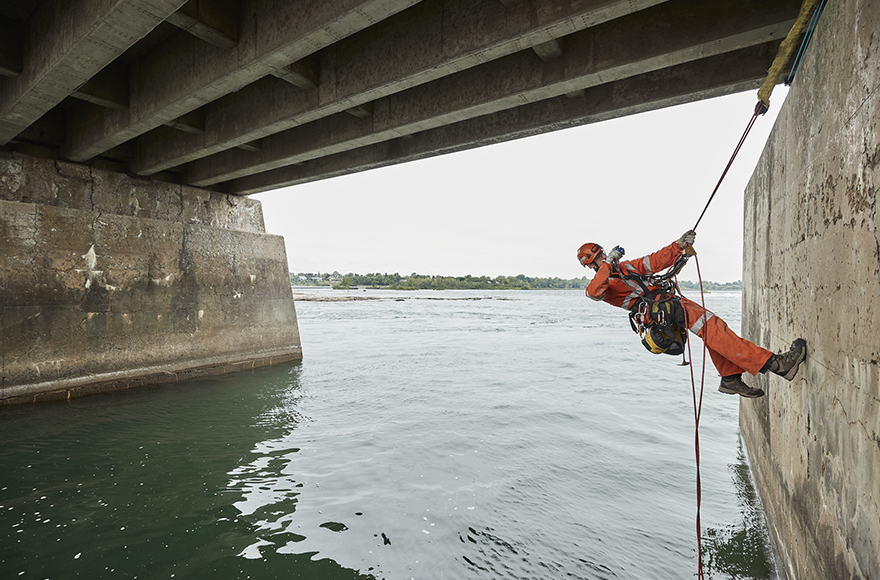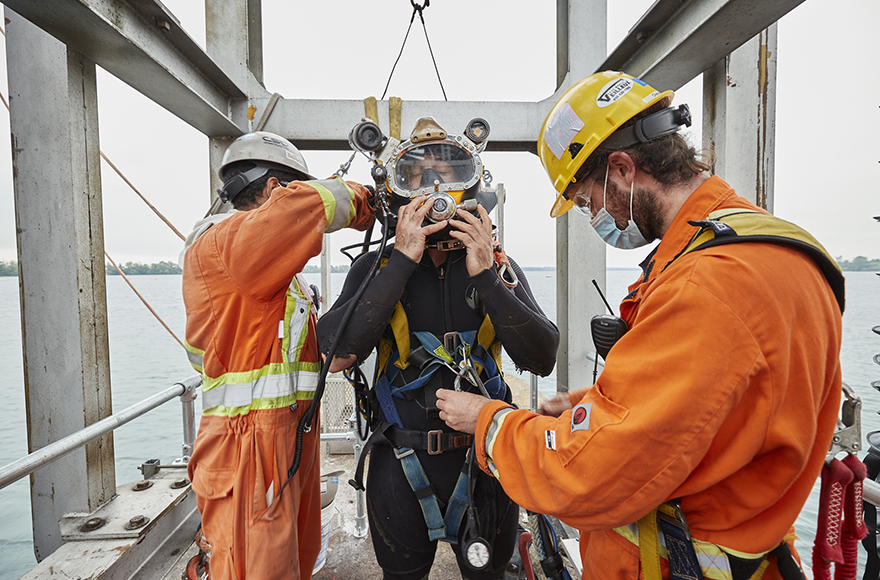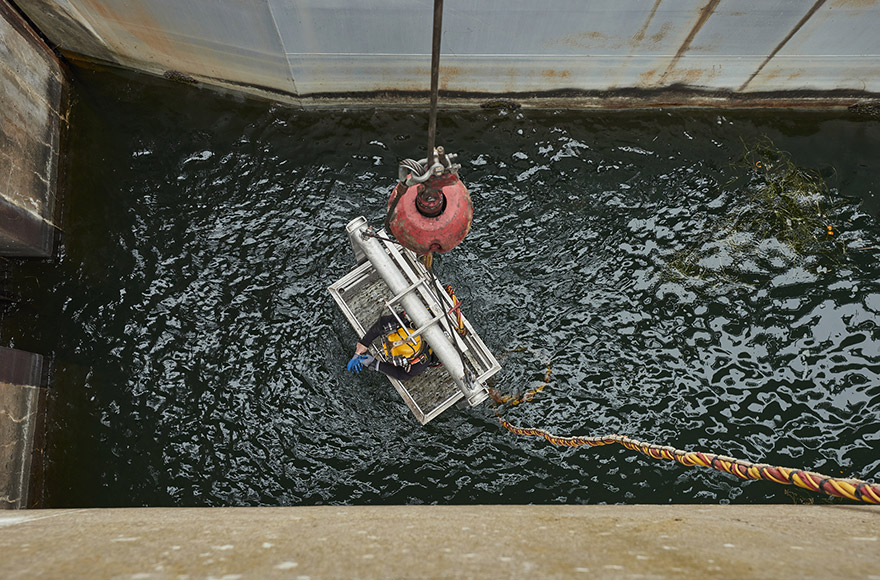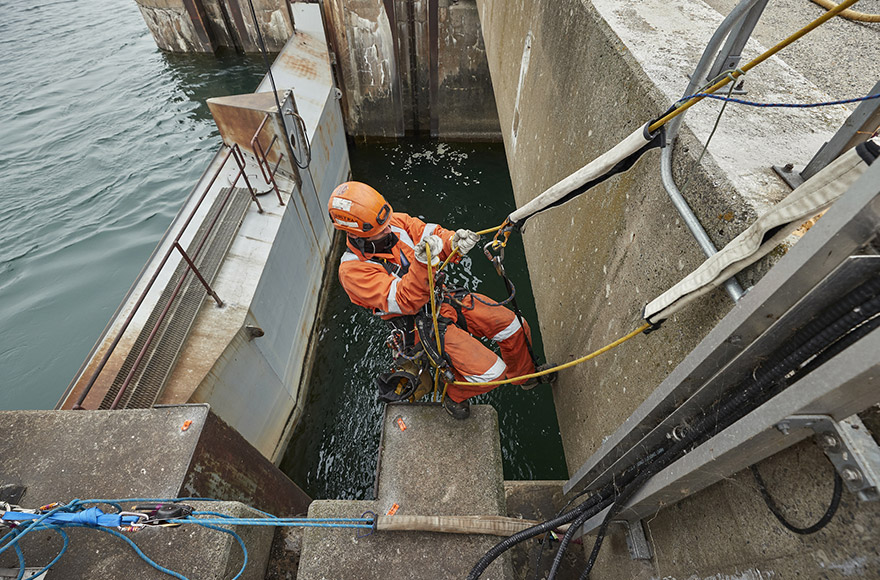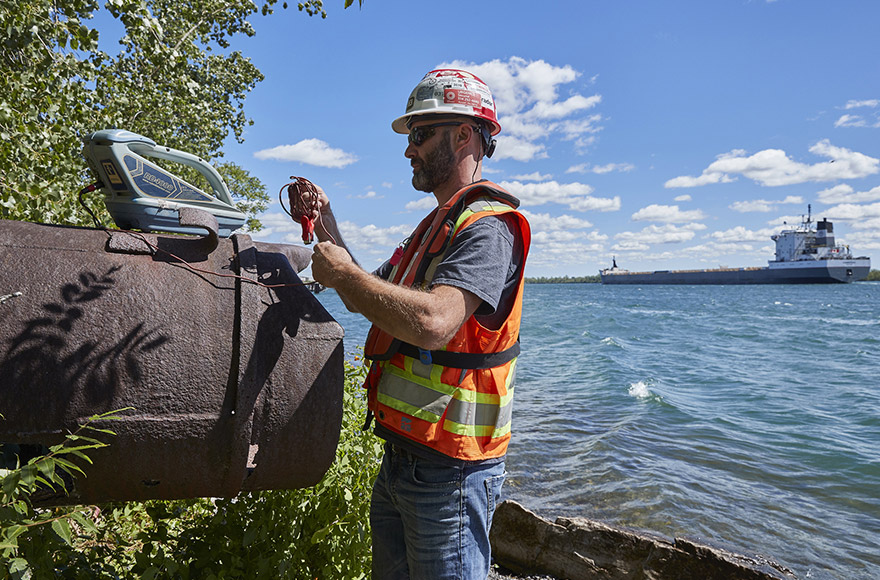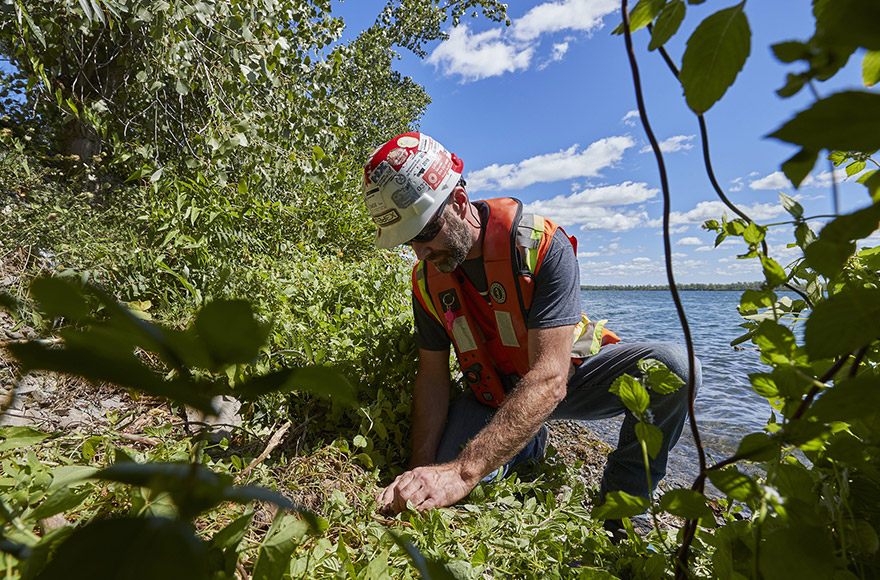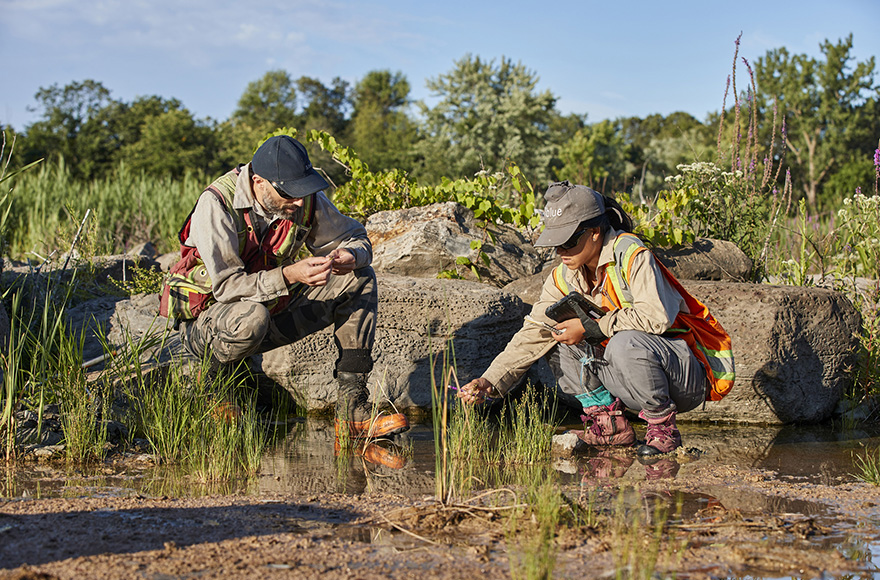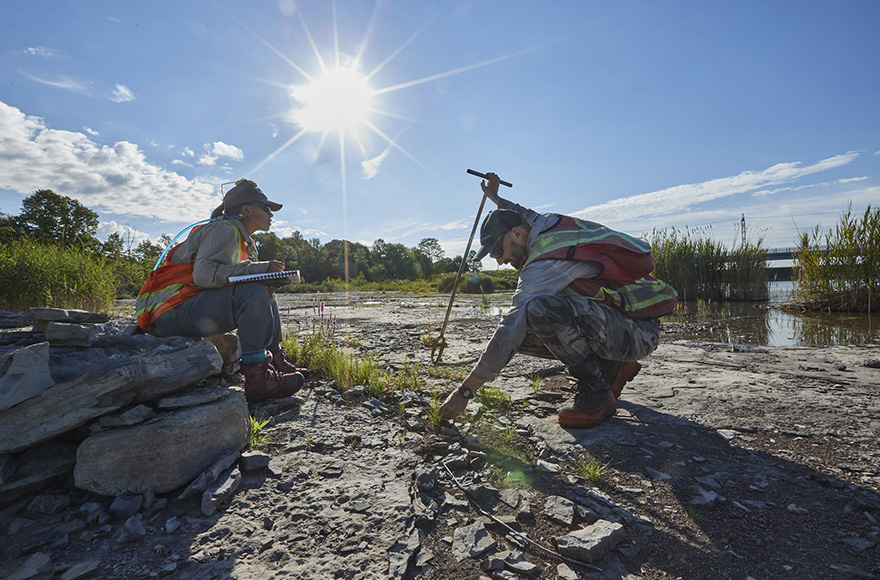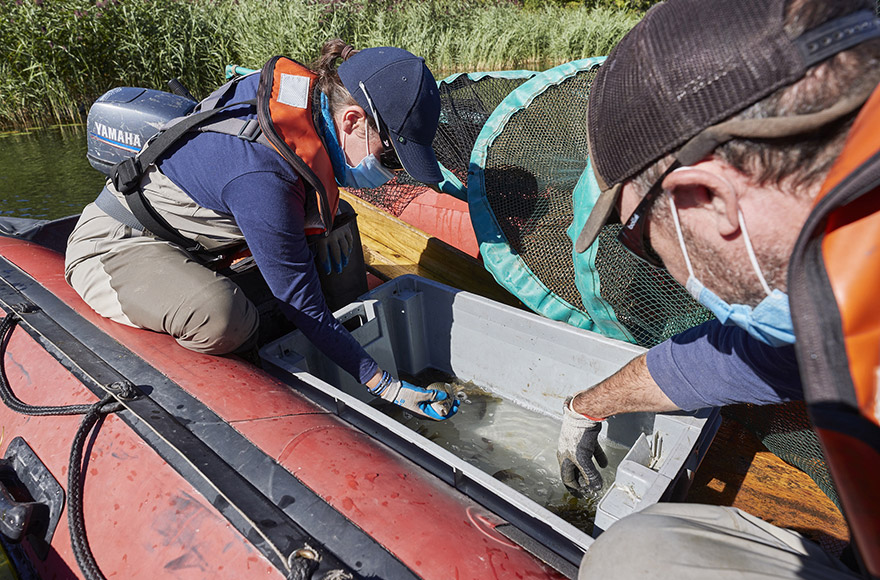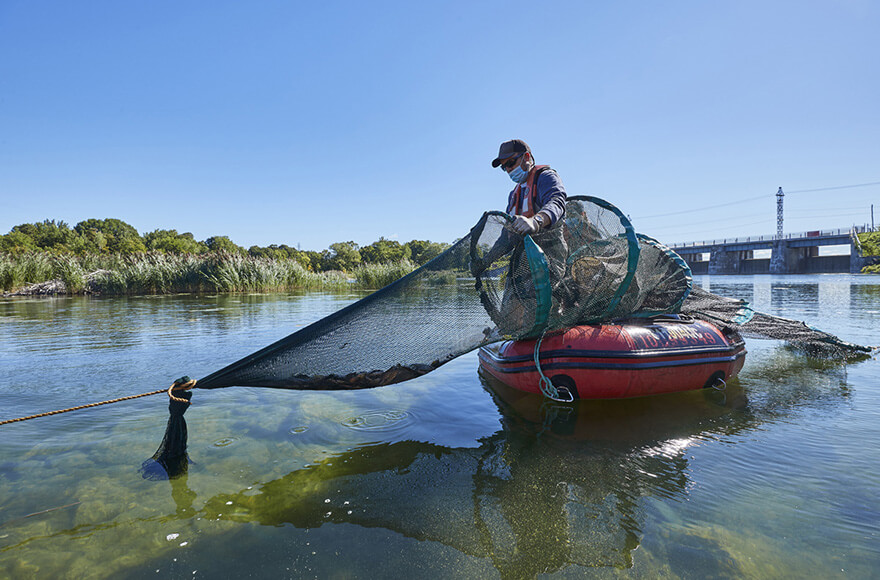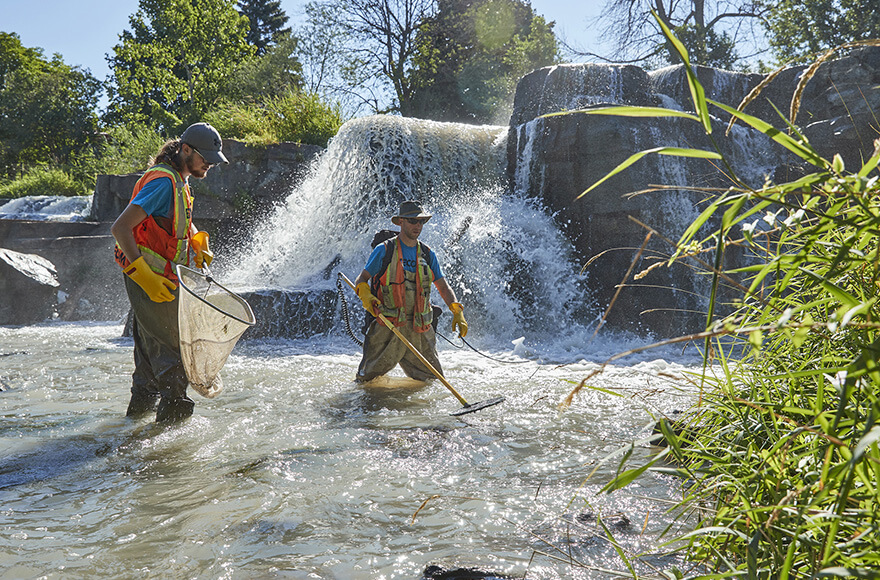The storage capacity of the Great Lakes is 22,950 billion cubic metres of water, or the equivalent of over six million Olympic pools.
Modernization of the Beauharnois–Les Cèdres hydropower complex

Ongoing work
Hydro‑Québec completed its main studies and investigations in 2021. In 2022, it began conducting priority work on certain structures to ensure they remain in good working order until the modernization work begins.
Ongoing workStudies and investigations
Hydro‑Québec conducted a series of technical and environmental studies and investigations on all the structures in the St‑Laurent and on the Beauharnois canal dikes, which were built between 1911 and 1971. These studies and investigations, caried out in accordance with the Dam Safety Act, allowed us to determine what work is required to ensure the safety and long-term operability of the structures, while extending their lifespan by several decades.
Technical reviews
Hydro-Québec carried out several technical reviews on the Beauharnois–Les Cèdres hydropower complex in order to further diagnose the condition of the concrete and embankment retaining structures, as well as the condition of the mechanical and structural components of the spillways.
Here’s an overview:
- Geotechnical investigations, including drilling, characterization studies and laboratory testing
- Environmental soil characterization study
- Investigations by rope access workers and divers on the heavy mechanical equipment of the dams such as gates, beams and embedded parts
- Surveys of submerged and emerged concrete surfaces
- Investigations on lifting equipment by specialized suppliers
In addition to Hydro-Québec’s teams, several engineering firms, laboratories and specialized contractors helped carry out these activities, under the supervision of structural, heavy mechanical, electrical equipment, geological, geotechnical, materials, environmental and health and safety engineers, technicians and specialists.
The main challenge is to carry out this work in compliance with health and safety standards while minimizing the impact on the operation of these structures.
Pictures of the investigation work
Technological innovations
In order to increase efficiency while ensuring worker safety, Hydro-Québec and the Institut de recherche d’Hydro‑Québec (IREQ) have taken up the challenge to develop various technologies that will meet the needs of underwater inspections.
Wirescan: This laser technology was developed a few years ago to survey the steel grooves that guide the gates of water intakes and spillways. During the investigations at the Beauharnois–Les Cèdres complex, the Wirescan technology was extended to the inspection and survey of concrete surfaces.
Cavitation cleaning: To properly inspect concrete surfaces and immersed steel components, it is essential to clean them. To facilitate the work of divers, Hydro‑Québec has adapted cavitation cleaning technology for use by its underwater robot.
Environmental studies
Hydro‑Québec documented the elements of the natural and human environment in order to optimize the environmental performance of its operations and generating facilities.
More specifically, Hydro‑Québec identified sensitive elements and environmental constraints that affect the management of reservoir water levels and flows, i.e., elements of the human environment (waterside infrastructure, recreational and tourism activities, etc.) and the natural environment (aquatic and semi‑aquatic wildlife, wetlands, erosion zones and wood debris accumulation).
As for the human environment, Hydro‑Québec documented land use, in particular by carrying out a study on the use of bike paths near its facilities.
Here is an overview of the environmental studies carried out:
-
Natural environment:
- Aquatic environment survey
- Water and sediment quality survey on the Beauharnois canal
- Herpetofauna survey (chorus frog, snakes, anurans and turtles)
- Avifauna (songbirds and waterfowl) survey
- Forest survey
- Water and sediment quality survey in bodies of water and streams
-
Human environment:
- Survey of sensitive elements
- Survey of the archeological potential
- Landscape survey
- Heritage surveys
